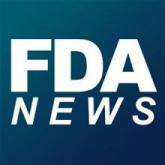News
FDA approves glofitamab for DLBCL
- Author:
- Zosia Chustecka
Glofitamab, a T cell–engaging bispecific antibody, has been approved by the Food and Drug Administration for adults with DLBCL.
News
Increased cancer in military pilots and ground crew: Pentagon
- Author:
- Zosia Chustecka
But military aircrew and ground crew were less likely to die from cancer, compared with the U.S. population.
News
Europe approves first gene therapy for hemophilia B
- Author:
- Zosia Chustecka
Exorbitantly priced gene therapy to treat hemophilia B has been approved for sale across the European Union and European Economic Area.
News
FDA approves once-weekly hemophilia A product
- Author:
- Zosia Chustecka
Newly approved by the FDA, this replacement therapy for a rare bleeding disorder has been found to reduce both dosing frequency and bleeds.
News
FDA approves first-in-class drug for follicular lymphoma
- Author:
- Zosia Chustecka
New treatment for relapsed/refractory follicular lymphoma, newly approved by the FDA, showed effectiveness in research presented at ASH 2022.
News
FDA approves olutasidenib for some AML patients
- Author:
- Zosia Chustecka
Olutasidenib has been green-lighted by the FDA for treatment of some patients with acute myeloid leukemia.
News
FDA rejects poziotinib for certain types of lung cancer
- Author:
- Zosia Chustecka
The clinical data the company submitted was deemed insufficient for approval.
News
Atezolizumab (Tecentriq) bladder cancer indication withdrawn in United States
- Author:
- Zosia Chustecka
The anti-PD-L1 inhibitor continues to be approved for lung and liver cancers and melanoma.
News
Blenrep for multiple myeloma withdrawn from U.S. market
- Author:
- Zosia Chustecka
As requested by the U.S. Food and Drug Administration, the multiple myeloma drug blenrep is being taken off the market after disappointing results...
News
FDA approves new immunotherapy combo for liver cancer
- Author:
- Zosia Chustecka
The Food and Drug Administration has approved a new immunotherapy combination for use in the treatment of...
News
FDA approves futibatinib (Lytgobi) for certain biliary tract cancers
- Author:
- Zosia Chustecka
Futibatinib is “a key example of the potential of precision medicine” in intrahepatic cholangiocarcinoma.
News
First drug therapy approved for childhood GVHD
- Author:
- Zosia Chustecka
FDA greenlights ibrutinib for child blood cancer patients with chronic graft-versus-host disease.
News
Oncologists’ wealth and debt: COVID had little impact
- Author:
- Zosia Chustecka
Oncologists’ income rose, on average, by 2% in the past year and now stands at an average of $411,000 annually.
News

FDA approves Enhertu (trastuzumab deruxtecan) for HER2 lung cancer
- Author:
- Zosia Chustecka
“These results establish the new standard of care for patients with NSCLC harboring HER2 mutations.”
News
Oncologists flock to Chicago for ASCO, after 2 years online
- Author:
- Zosia Chustecka
The theme of the 2022 meeting is advancing equitable cancer care through innovation.
